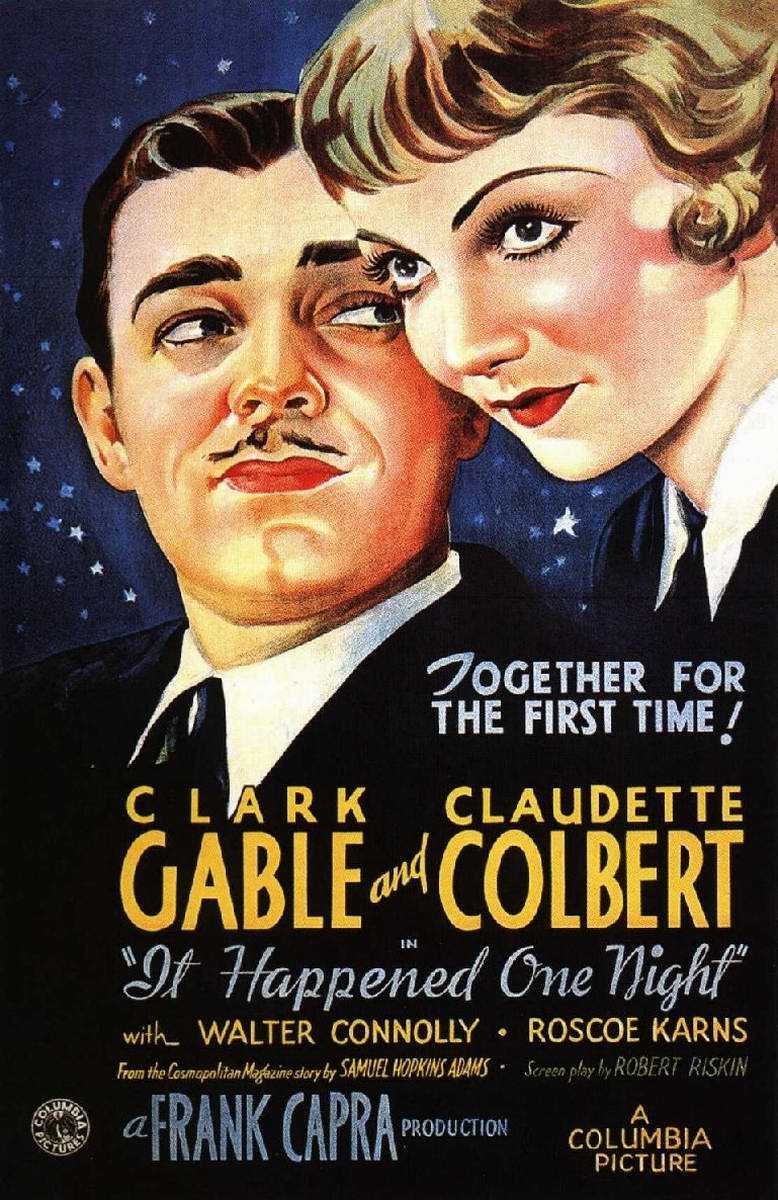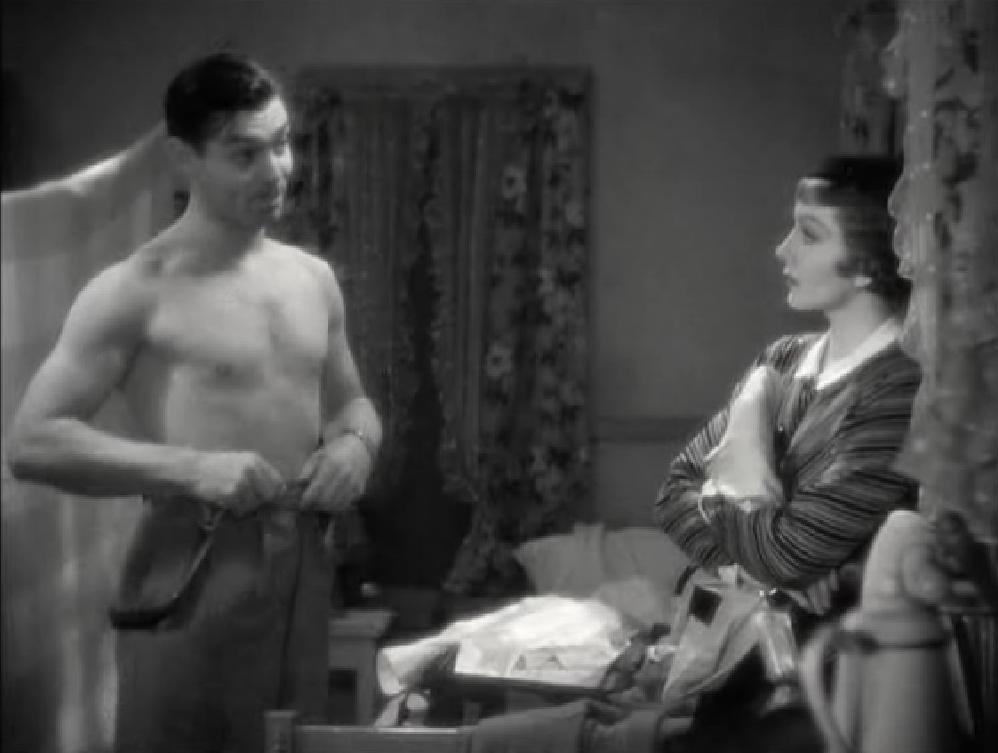 Tim here, with your daily dose of Oscar numerology. We’re now in the third year of the Academy’s undoubtedly well-intentioned "some random number that always turns out to be nine" approach to selecting Best Picture nominees, and for some of us, this is irritatingly arbitrary. But it could be so much worse. Think of how awful it must have been to been a rabid Oscar fanatic in the first decade of the award’s existence: depending on the year, there were anywhere from three to twelve Best Picture nominees, until it was finally nailed down at a nice, round ten at the 9th Academy Awards, for the year 1936.
Tim here, with your daily dose of Oscar numerology. We’re now in the third year of the Academy’s undoubtedly well-intentioned "some random number that always turns out to be nine" approach to selecting Best Picture nominees, and for some of us, this is irritatingly arbitrary. But it could be so much worse. Think of how awful it must have been to been a rabid Oscar fanatic in the first decade of the award’s existence: depending on the year, there were anywhere from three to twelve Best Picture nominees, until it was finally nailed down at a nice, round ten at the 9th Academy Awards, for the year 1936.
The magic number of the day being 12, I'd like you to join me, for a closer look at 1934, the first of two years with 12 nominated films (for space reasons, I am alas compelled to leave 1935 to fend for itself) - the first year, as well, that the awards corresponded to a single calendar year. What can we learn about the Academy’s tastes and habits down the decades from each of these?

BEST PICTURE – It Happened One Night (released by Columbia)
What It Is: One of the greatest of all screwball comedies, in which the sexily odd-looking pair of Claudette Colbert and Clark Gable cross country and banter.
The Slot It Fills: The long-abandoned "comedies are a valid form of artistic expression like anything else" spot. But, of course, the period in which the film came out was unusually good at producing top-notch comedies starring the best movie stars of the day.
Only 11 more slots to fill after the jump

2nd Place – The Barretts of Wimpole Street (released by MGM)
What It Is: A romantic costume drama centered on the courtship of poet Elizabeth Barrett (Norma Shearer) by poet Robert Browning (Fredric March)
The Slot It Fills: Unbelievably, the Academy used to be excited by stories about the personal lives of famous artists. Thank God those barbaric days are behind us.

3rd Place – The House of Rothschild (released by 20th Century)
What It Is: The story of how the German-Jewish Rothschild family spread its banking influence throughout Europe and changed the history of the world.
The Slot It Fills: Another period drama about famous people, but denuded of any melodrama, so it belongs more closely to the "Jewish interest" subgenre not recognized by the Academy again until A Serious Man 75 years later.

Cleopatra (released by Paramount)
What It Is: Another Claudette Colbert vehicle, this time positioning her as the most famous celebrity of the ancient world.
The Slot It Fills: Yet another costume drama biopic, but this one emphasizing the "sordid lives of the ancients" angle that would be revisited many times in the ‘50s. As a film largely about its exotic and the potent performance by a famous and beloved actress, it is closest to Gravity of this year’s crop.
Flirtation Walk (released by First National)
What It Is: A musical romantic comedy about a soldier played by Dick Powell who falls in love with an officer’s daughter played by Ruby Keeler, and goes to West Point, where he puts on a show.
The Slot It Fills: Believe it or not "military-themed romantic comedy" crops up multiple times in the Academy’s history. Also, Powell & Keeler were sort of the Adam Sandler and Kevin James of the ‘30s, so let’s be grateful that the Academy is more comedy-snobbish now.

The Gay Divorcee (released by RKO Radio)
What It Is: Fred Astaire falls in love with Ginger Rogers on the spot. She is annoyed by him, so he has to dance his way into her heart. Edward Everett Horton is on hand to be flustered and crypto-gay. AKA "the movie that they made, like, six times". This is the time where it included the awe-inspiring "Night and Day" number.
The Slot It Fills: Movie stars that everybody loves doing things that everybody knows they could do, and it is genially comic; clearly, this was the American Hustle of 1934.
Here Comes the Navy (released by Warner Bros.)
What It Is: A cocky construction worker (James Cagney) joins the Navy to get back at a stuffy officer (Pat O’Brien), and falls in love with the officer’s sister (Gloria Stuart, later of Titanic).
The Slot It Fills: I TOLD you that "“military-themed romantic comedy" was a thing.
Imitation of Life (Universal)
What It Is: Official face of the Oscars Claudette Colbert is a widow who finds a way to turn her black housekeeper’s (Louise Beavers) pancake recipe into a national hit. Years later, they have trouble with their daughters.
The Slot It Fills: The social issues melodrama. Unlike most later examples of the form, it actually manages to be unusually progressive and insightful for its time. Its current descendents include, in very different registers, 12 Years a Slave and Philomena.
One Night of Love (released by Columbia)
What It Is: An up-and-coming opera star (Grace Moore) and her conductor-manager (Tullio Carminati) fall in love, through misunderstandings.
The Slot It Fills: One of many melodramas themed around classical music from the era when normal people still listened to classical music. Basically, imagine if Glitter with Mariah Carey had managed to swing an Oscar nomination

The Thin Man (released by MGM)
What It Is: Two high-functioning alcoholics (William Powell, Myrna Loy) have the sexiest marriage in the history of American cinema, living gorgeously, and making everyone jealous of their charm and wit. There is a murder mystery underneath all of this.
The Slot It Fills: It is the most sophisticated of the handful of sophisticated comedies to register with the Academy during the short period when such films were common.
Viva Villa! (released by MGM)
What It Is: A massively fictionalized biopic of Mexican revolutionary Pancho Villa, played by humanoid potato Wallace Beery.
The Slot It Fills: A dubiously historical story about a real-life person changed into something unrecognizable. In 2013, we call it the "Dallas Buyers Club slot", but it shows up with depressing frequency.
The White Parade (released by Jesse L. Lasky)
What It Is: One of only two best picture nominees that exists solely in the UCLA film archive (the other is 1931’s East Lynne), it’s the single film out of the twelve that I’ve never seen. From the title, I’d like to imagine that involves an unending line of shapely blonde women ambling through an African village and mocking the native inhabitants for not being gorgeous Americans. But I think it’s something to do with nurses.
The Slot It Fills: Hopefully, the same one that will be filled by instant-classic Nurse 3D at the 2014 Oscars.
 And now for some senseless speculation: if there'd only been room for ten nominees, what would have been dropped? Here Comes the Navy and The House of Rothschild are the only films to receive no other nomination, but the latter, I feel, would have hung on (and the former was Warner's only nomination; surely the studio would have fought harder than e.g. MGM getting three titles in). My suspicion is that Navy, The White Parade, Flirtation Walk, and Viva Villa! were in the bottom four slots, and the first two of those are the ones that I think would have dropped out. I will leave winnowing the field down to five, or *sigh* nine slots as an exercise for you to complete in the comments.
And now for some senseless speculation: if there'd only been room for ten nominees, what would have been dropped? Here Comes the Navy and The House of Rothschild are the only films to receive no other nomination, but the latter, I feel, would have hung on (and the former was Warner's only nomination; surely the studio would have fought harder than e.g. MGM getting three titles in). My suspicion is that Navy, The White Parade, Flirtation Walk, and Viva Villa! were in the bottom four slots, and the first two of those are the ones that I think would have dropped out. I will leave winnowing the field down to five, or *sigh* nine slots as an exercise for you to complete in the comments.